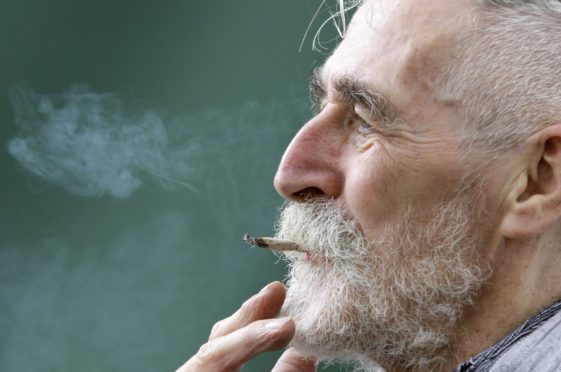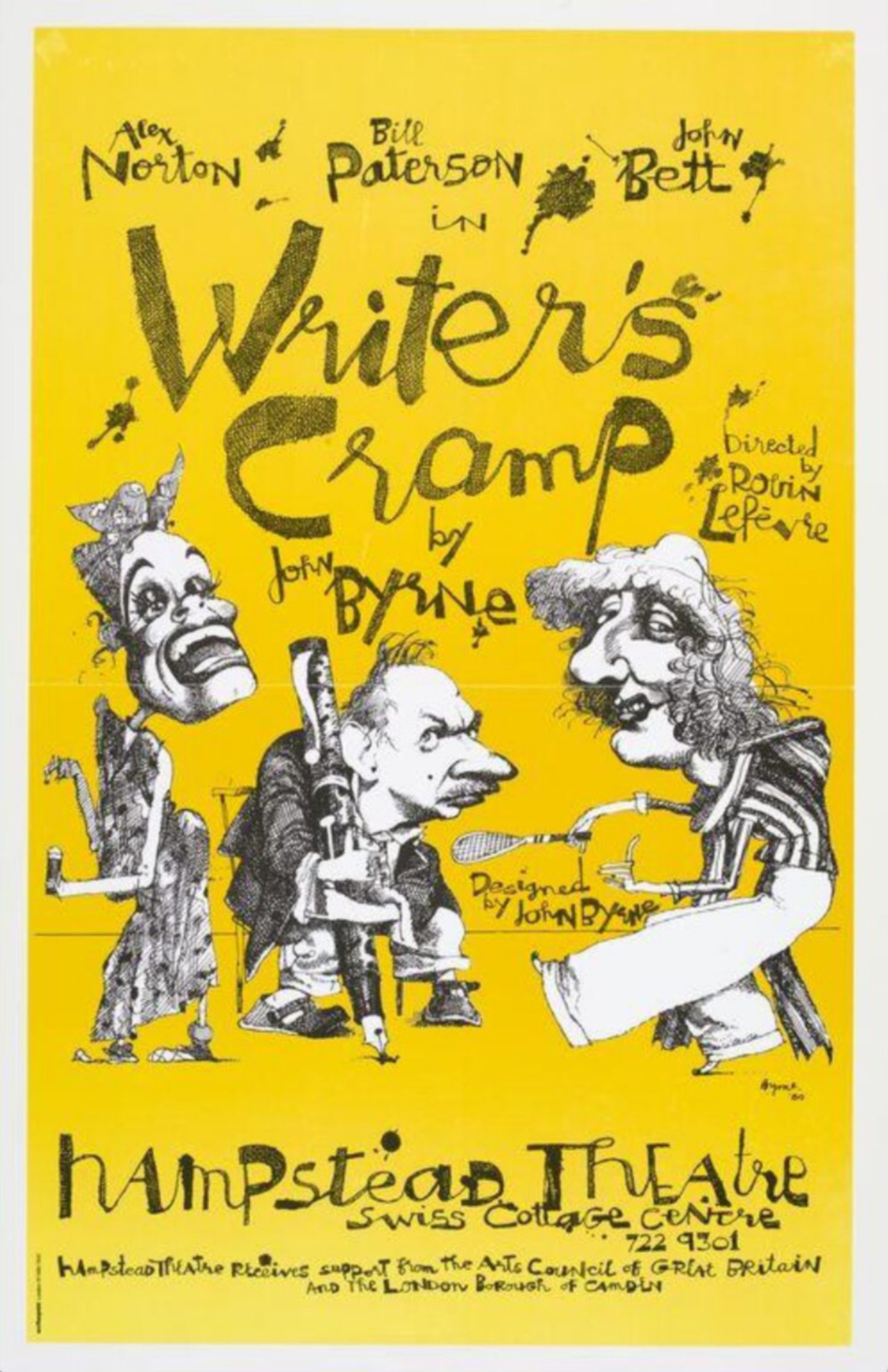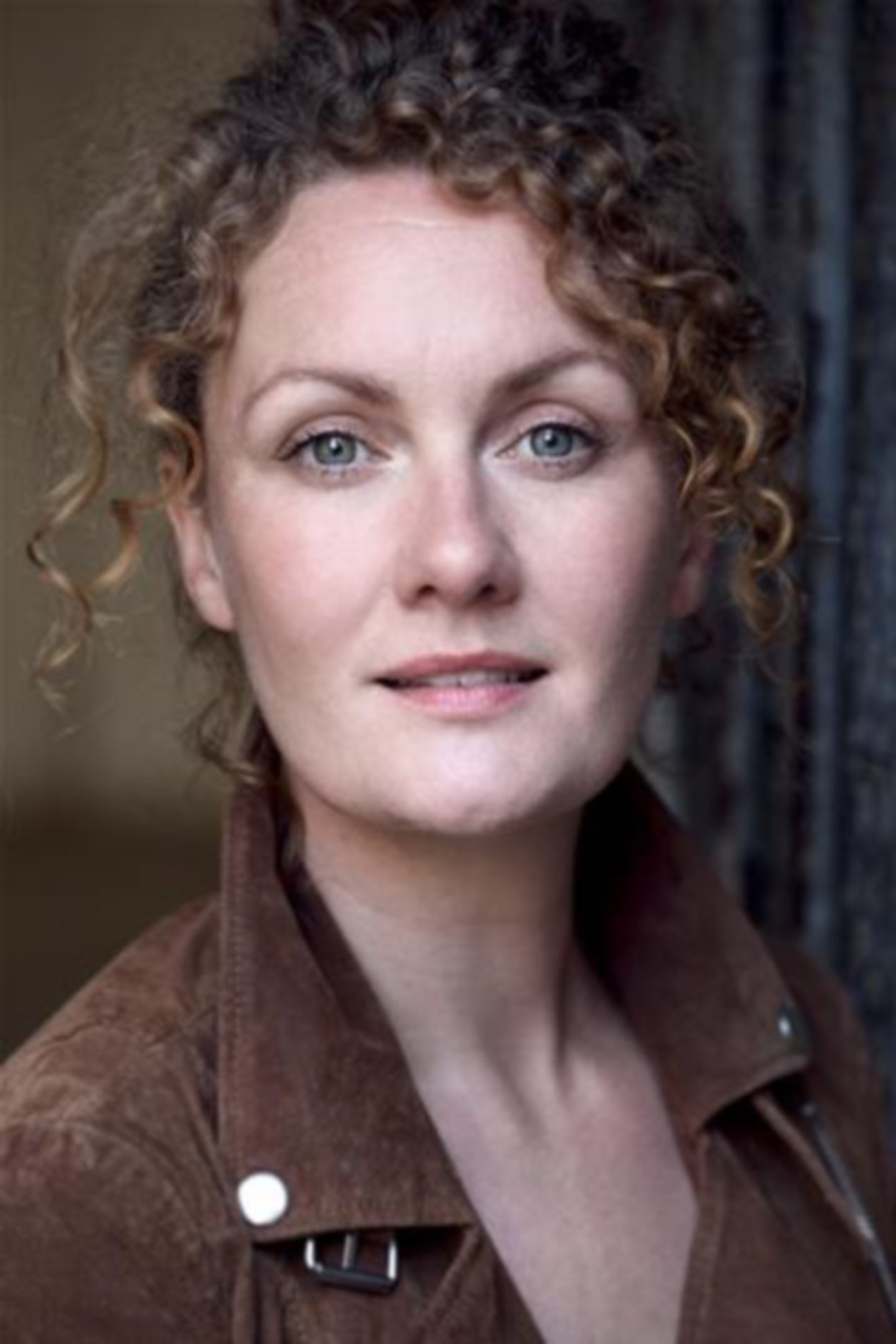
The writer typed the script with one finger on an old typewriter, and the actors delivered the lines with their heads stuck in wardrobes.
Yet the result is one of the most anticipated pieces of work in the Scottish cultural calendar since the pandemic forced theatres to fall dark a year ago.
A new play by John Byrne, one of Scotland’s best-loved writers and artists, will receive its premiere later this month in defiance of Covid’s onslaught on the arts.
Tennis Elbow is Byrne’s first play for 13 years and a follow-up to his first, Writer’s Cramp, produced 44 years ago.
It is the latest in a rich seam of work the Paisley-born artist has created in a career spanning six decades, during which time works like Tutti Frutti and The Slab Boys trilogy have achieved classic status.
Writer’s Cramp told the story of fictional writer and artist Francis Seneca McDade. Tennis Elbow tells the story from his wife Pamela’s perspective.
Byrne said: “Tennis Elbow is the distaff side of Writer’s Cramp. I remember Writer’s Cramp being a wonderful thing to do. It was at the Edinburgh Fringe in 1967 with Alex Norton, John Bett and Bill Paterson. I’ve had the idea to do the distaff side of it since then. I’ve always been meaning to do it, and I eventually got down to it.”
Byrne has been working on the play over the years, but lockdown has finally brought it to the point of performance as part of Pitlochry Theatre’s Sound Stage initiative.
Byrne said: “I could do without lockdown of course, but it doesn’t bother me too much. I have been painting every day as always, every day from morning until night. It’s the same as it’s been for 70 years. It has given me an opportunity to do stuff and not be disturbed by anyone at all, nobody asking me to do stuff for them. I almost can’t remember when we weren’t locked down.”
Tennis Elbow is not the first piece of work Byrne has seen presented to the public since Covid descended. Last year saw an exhibition of his work, Welcome To My World, at the Fine Art Society in Edinburgh. “It did very well,” said Byrne, speaking at the home he shares with wife Jeanine in Edinburgh.
As part of Pitlochry Theatre’s Sound Stage programme, Tennis Elbow is presented as an audio play. It features Maureen Beattie, Scot Squad actor Sally Reid and Kirsty Stuart, who has featured in TV hits Outlander and Shetland.
Byrne is delighted his work is being delivered as an aural experience. He said: “I am an avid wireless listener. I can listen to the wireless and take everything in and paint at the same time. They’re the only two things I can do at the same time. I can’t do anything else together for some reason.
“I don’t actually need to see the characters. I can see them in my imagination. And I hope everyone who hears the show can do the same. But they’re probably not sitting there painting.”
Byrne still types his written work on a typewriter, working with one finger. “It’s how I have always worked. My cousin Aileen lent me a typewriter when she was learning to become a touch typist. I bought one for a fiver in Back Sneddon Street in Paisley after that, but I’ve only ever typed with one finger. That’s as fast as I can think, and no faster.
“I type as quickly as I think and it looks like a draft of a play. But then I rewrite it. Broadway writer Moss Hart used to say there’s no such thing as writing, there’s only rewriting. And he was right. People nowadays write one draft and cut and paste bits of it here and there.”
Byrne might be slower at 81, but his creativity remains undimmed. He works in the studio in his back garden, adapting his technique in response to trouble with his eyes.
He said: “I can only see black and white with my right eye and colour with the left eye. So I have resorted to a technique where I can make marks and then colour those marks to make something that resembles a painting. It’s a new strain of painting for me.”
Byrne studied at Glasgow School of Art and feels the art school’s plans to rebuild Charles Rennie Mackintosh’s world-renowned building after the devastating fire three years ago are pointless. He said: “You can’t just build a replica of a building built by Charles Rennie Mackintosh in the early-1900s and call it the art school.
“When you went into that building it had a soul. All great works of art have a soul. A replica would be a waste of money, because you can’t replace its soul. It was a worldwide treasure and you just can’t replicate that.”
Byrne has lived a full life. He had two children with first wife Alice Simpson and twins with actor Tilda Swinton. He married Jeanine Davies seven year ago.
In a 2017 interview, he revealed his birth was the result of sexual abuse his mother had suffered at the hand of her own father. “She was in love with her own father,” he said at the time, going on to say he’d found a way to reconcile his grandfather’s behaviour. In his ninth decade, he looks back with no regrets.
“I wouldn’t change a thing about my life, because this is the life I have led,” he said, although concedes he wishes he could ride his Flying Scot bicycle one more time. “I can’t balance to ride a bike now.”
Byrne’s legacy will endure in words and pictures yet he’s unable to value his visual or literary work over the other. “I have twins, who I love,” he said. “I also have twins on the page and in canvas, who I also love. You can’t separate them.”
And he has no plans to stop. “I’ll be painting in purgatory,” he said, laughing. “My mother swore I was drawing in the pram and I quite believe her.”
Tennis Elbow starts on April 30. See pitlochryfestivaltheatre.com for info and tickets.
I was in the wardrobe with a duvet but couldn’t have been happier
– Writer Kirsty Stuart
Kirsty Stuart joined the Tennis Elbow cast from a wardrobe in her child’s bedroom.
When lockdown hit, the actor bought a piece of furniture she’d had no need for just a few months earlier.
“My husband and I also do voiceovers. We’d talked about getting something at home, but when lockdown came around we did it,” she said, opening the wardrobe covered in blankets and sound insulation foam.
“You squeeze into this space and put a duvet behind you and that’s it.”
It’s not how the Fife-based actor, who has appeared in TV series including Outlander and Shetland, would have chosen to perform the works of one of the country’s most respected artists.
“It was a no-brainer when I was asked to be involved. But I was terrified because it was John Byrne’s work. I felt as if I wanted four weeks’ rehearsal.
“You just have to serve John Byrne’s words. It’s actually more about submitting to what he has written rather than finding the character, allowing his words to do the work for you, because he does that, in an extraordinary way.”
Kirsty teamed up with the other cast in a mix of audio and video links to create as interactive an acting environment as possible.
“Not only are you in a tiny wardrobe but you have a phone balanced and a laptop and all the rest of it just to keep it going,” she said. “Stuff balanced on books.”
And she’s hoping Tennis Elbow is seen as an event by audiences at home. She said: “I hope people make a commitment to watching it the same way as they would if they’d gone to a theatre. They make space in their schedule for it.
“There’s something lovely about giving people something to look forward to in an achingly empty social calendar.”
Pitlochry Theatre artistic director Elizabeth Newman added: “Sound Stage is about reaching audiences, giving them high-quality new drama to experience at home. It’s about making sure they can have a theatre experience which we know they’ve been missing. Audiences can even meet up with their friends in the theatre bar before, in the interval and with artists involved in the making after the shows.”

Enjoy the convenience of having The Sunday Post delivered as a digital ePaper straight to your smartphone, tablet or computer.
Subscribe for only £5.49 a month and enjoy all the benefits of the printed paper as a digital replica.
Subscribe
